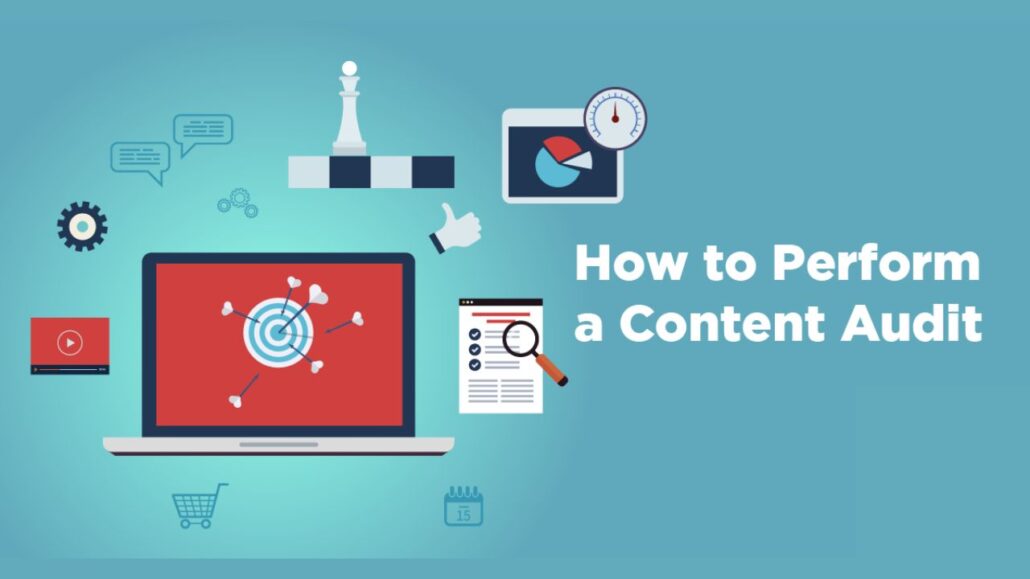Content Audit Checklist Shared by Users Comprises user-contributed guidelines and recommendations for effectively auditing and optimizing content for various purposes and platforms.
Content is the lifeblood of any successful online presence. It’s not just about having content; it’s about having relevant, high-quality content that resonates with your target audience.
A content audit is a strategic approach to evaluate and optimize your existing content to ensure it aligns with your business goals and satisfies user needs.
Understanding Content Audits

Purpose and Benefits:
A content audit serves the purpose of analyzing all content assets to evaluate their performance and relevance. Benefits include improved SEO, enhanced user experience, and a more effective content strategy.
Key Elements:
The audit analyzes content quantity, quality, SEO effectiveness, relevance, and alignment with business objectives.
Importance of a Content Audit Checklist
A content audit checklist is a comprehensive tool that guides the audit process, ensuring no crucial aspects are overlooked. It streamlines the evaluation, making the audit more efficient and effective.
Content Audit Checklist
a. Identifying Goals and Objectives:
Define the objectives of the audit, whether it’s improving SEO, enhancing engagement, or aligning content with a new marketing campaign.
b. Inventory of Existing Content:
Compile a detailed list of all existing content, including URLs, formats, and publication dates.
c. Content Assessment and Evaluation:
Evaluate each piece of content for relevance, accuracy, engagement metrics, and alignment with brand messaging.
d. Gap Analysis and Opportunities:
Identify gaps in content coverage and opportunities to create new content that aligns with business objectives.
e. SEO Analysis:
Assess the SEO performance of each piece of content and identify areas for optimization.
Implementing Changes Based on the Audit
Once the audit is complete, use the findings to implement necessary changes, including content updates, creation of new content, and SEO improvements.
User-Generated Content and its Role

a. Leveraging User Contributions:
User-generated content can be valuable to your content strategy, providing authenticity and engaging your audience.
b. Assessing User-Generated Content:
Evaluate user-generated content for relevance, quality, and alignment with your brand’s values and objectives.
The Role of Analytics in Content Audits
Utilize analytics to track content performance, user behavior, and engagement metrics. Use these insights to refine your content strategy and make data-driven decisions.
Ensuring Accessibility and Compliance
Ensure your content is accessible to all users, including those with disabilities, and complies with relevant legal and ethical standards.
Content Refresh and Update Strategy
Regularly review and refresh your content to keep it current and aligned with the latest industry trends and user expectations.
Future-Proofing Your Content Strategy
Stay adaptable and forward-thinking in your content strategy to anticipate future trends and technologies.
Case Studies: Successful Content Audit Implementations
Explore real-world case studies to understand how businesses have successfully implemented content audits and improved their online presence.
Common Challenges and How to Overcome Them
Address common challenges in content audits, such as resource limitations and resistance to change, and provide practical solutions.
Tips for a Seamless Content Audit Process
Offer tips to streamline the content audit process, ensuring efficiency and accuracy in evaluating and optimizing your content.
What is the Content Audit Checklist
A content audit checklist is a structured tool to evaluate and organize existing content on a website. It helps assess content quality, relevance, and performance, aiding strategic content improvements.
Best Content Audit Checklist
This comprehensive content audit checklist has been curated to encompass essential elements for evaluating and optimizing content. It results from meticulous research and expert insights, making it a top choice for professionals seeking to enhance their content strategies.
User-Recommended Content Audit Checklist
Drawing on the collective wisdom of users, this content audit checklist has been carefully crafted based on their invaluable recommendations. It reflects the preferred practices and methodologies a diverse community of content enthusiasts and experts suggests.
Top Content Audit Checklist by Users
Aggregated from user insights, this content audit checklist is a testament to the most highly regarded practices in the field. It has been refined through feedback and experiences shared by a wide range of users, establishing it as a top-tier resource for content auditing.
Recommended Content Audit Checklist from Users
This content audit checklist is highly recommended by users who have successfully optimized their content strategies. It encapsulates the most favored approaches and techniques the user community acknowledges, making it a trusted tool for content improvement.
User-Curated Content Audit Checklist
Crafted through collective effort and collaboration, this content audit checklist represents a curated selection of user best practices across different domains. It showcases a variety of perspectives, ensuring a well-rounded approach to content auditing.
Crowdsourced Content Audit Checklist
Utilizing the power of crowd wisdom, this content audit checklist has been sourced from the collective insights and expertise of a diverse user base.
Additionally, it reflects a comprehensive understanding of content auditing principles derived from the collective intelligence of contributors.
Popular Content Audit Checklist Among Users
Based on user preferences and experiences, this content audit checklist embodies the most popular methods and steps that most users favor. Additionally, it’s a go-to resource for those seeking to align their content auditing efforts with widely accepted best practices.
Most Shared Content Audit Checklist by Users
Shared and endorsed by many users, this content audit checklist represents a compilation of the most impactful strategies for evaluating content. Furthermore, its popularity among users highlights its effectiveness in content optimization.
Community-Sourced Content Audit Checklist
Designed by pooling insights and knowledge from a diverse community, this content audit checklist results from collective sourcing from enthusiasts and professionals. Additionally, it encapsulates various perspectives and approaches, making it a valuable resource for content auditing.
User-Approved Content Audit Checklist
Endorsed and approved by users for its efficacy, this content audit checklist has gained recognition within the user community. Furthermore, users have validated its methodology and steps, thereby establishing it as a trusted tool for enhancing content strategies.
Why Do You Need To Audit Your Content?
Your stuff is not impervious to the passage of time. Things once believed to be unquestionable facts are constantly proven false, from geocentrism to who discovered the Americas. The internet era has sped up this process.
Set Your Goals
Setting your goals is the crucial first step in any project or endeavor. Define what you aim to achieve, whether it’s increasing website traffic, boosting social media engagement, improving product sales, or enhancing brand awareness.
Your objectives should be SMART—specifically defined, measurable, achievable, relevant, and time-bound. Consequently, these goals will serve as the guiding beacon throughout your content strategy and marketing efforts.
Collect And Categorize Content
Effective content creation begins with first collecting a diverse range of relevant content. Next, this content can encompass various forms such as articles, images, videos, infographics, case studies, or any other media that aligns with your goals and target audience.
This content is categorized based on themes, topics, formats, or target audience segments. Additionally, this classification is vital for organized content management. Consequently, it aids in easily retrieving, analyzing, and utilizing content for various marketing initiatives.
Track Metrics And Analyze Data
Once your content is out there, tracking its performance using relevant metrics is essential. These metrics include website traffic, engagement rates, click-through rates (CTR), conversion rates, social media shares, and more.
Analyzing this data helps you understand what’s working, what’s not, and why. Moreover, it allows you to make data-driven decisions, optimize your content strategy, and tailor your future efforts for better results.
Furthermore, regular analysis and adjustment based on these insights are key to a successful content strategy.
Conclusion
Content Audit Checklist Shared by Users, In conclusion, a well-executed content audit and a thoughtfully designed content audit checklist are essential to keep your online presence effective, relevant, and aligned with your business objectives.
Regular audits are essential, and furthermore, optimizations based on these audits will help you stay ahead in the competitive digital landscape.
FAQ:
What is a Content Audit?
A content audit systematically assesses all content assets; consequently, it enables a comprehensive evaluation of their performance, relevance, and alignment with business goals.
Why is a Content Audit Important?
A content audit is important; moreover, it ensures that your content remains effective, relevant, and aligned with your business objectives, consequently leading to improved SEO and enhanced user experience.
How Often Should a Content Audit be Conducted?
The frequency of content audits may vary based on your industry and business goals; however, conducting one at least annually is a good practice.
What Tools Can Help in Conducting a Content Audit?
Various tools are available for conducting a content audit effectively; for instance, SEMrush, Screaming Frog, and Google Analytics provide comprehensive insights and analysis.
How Long Does it Take to Complete a Content Audit?
The time required to complete a content audit depends on your website’s size and the audit’s depth. Additionally, it can range from a few days to a few weeks.
What is a Content Audit Checklist?
A content audit checklist is a structured tool used to evaluate and assess content quality, furthermore, relevance, and performance on a website or digital platform.
How do You Prepare an Audit Checklist?
To prepare an audit checklist, firstly, identify key content criteria, objectives, and metrics relevant to your website or platform. Next, organize these into a structured format for easy evaluation.
Which Content Types are Included in a Content Audit?
Content types typically included in a content audit include articles, blog posts, videos, images, infographics, PDFs, landing pages, and other digital content on the platform. Additionally, various other digital content is examined during the content audit process.
Which Tool is the Best Fit for Doing a Content Audit?
The choice of a content audit tool depends on specific needs, but popular options include tools like Screaming Frog, SEMrush, Ahrefs, and ContentKing, which offer comprehensive content audit features.



